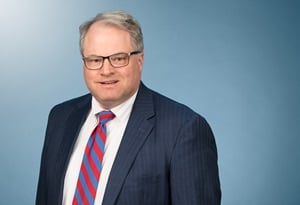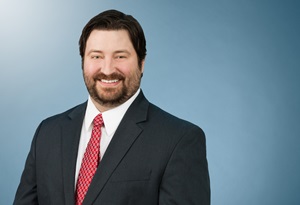Minnesota Legislative Update: 2018 Legislative Session Preview
The 2018 Legislative Session begins next week, on Tuesday, February 20. If the interim was any indication, this session is likely to be challenging and fraught with controversy.
At the end of last session, Governor Mark Dayton vetoed the Legislature’s funding, hoping to bring them back to re-negotiate parts of the tax bill he had already signed into law. In November, the Minnesota Supreme Court concluded that the Governor’s line-item vetoes of the operating appropriations for the Minnesota Senate and House of Representatives did not violate a Governor’s authority to line-item legislative appropriations. The Court also concluded that these line-item vetoes did not violate separation of powers principles in the Minnesota Constitution. The Court declined to resolve the question of whether the line-item vetoes violated the Constitution as being unconstitutionally coercive.
The current impasse between the Governor and Legislature will not be resolved until the Legislature reconvenes next week. GOP leaders say they want to send the Governor a clean funding bill in the first weeks of session. However, DFL leaders want to include state employee contract approval as part of the bill.
This is Governor Dayton’s last session, as he opted not to run for reelection this year. He will want to solidify his legacy on early education and water quality. Other priorities this year will be a bonding bill, tax conformity, and a possible supplemental budget.
Bonding
The second year of the biennium is typically considered a bonding year where the major piece of legislation worked on is the capital investment bill. In January, Governor Dayton released his 2018 Capital Budget recommendation for $1.5 billion in investments. The proposal is estimated to create 22,950 jobs in more than 218 projects across the state. If lawmakers decided to fund local government building requests not included in the Governor’s proposal, the amount would increase to $2.3 billion. Senator Dave Senjem (R, Rochester), chair of the Senate Capital Investment committee, believes the Governor’s recommendation is much too high. He expects a bill closer to $800 million. Representative Dean Urdahl (R, Grove City), chair of the House Capital Investment committee, agreed with his Senate colleague, stating that he supports many of the projects the Governor supports, but not at the same dollar amount. Last year, the Legislature passed a $988 million bonding bill that included funding for transportation, higher education, water infrastructure and other projects across the state.
Tax Conformity
Since the enactment of the Tax Cuts and Jobs Act (TCJA), Minnesota’s Department of Revenue (DOR) has been analyzing what the new Act will mean for Minnesota. The TCJA marks the most significant changes to the Internal Revenue Code (Code) since 1986 and affects nearly every major aspect of federal tax law. The 2018 Legislative Session will consider what changes should be made to the State income tax based on analysis of the impacts of the TCJA.
Minnesota is one of six states that use federal taxable income as a starting point in determining taxable income. The impact that the TCJA will have on Minnesota taxpayers depends on how the changes to the Federal Code affect the determination of federal taxable income. Preliminary estimates by the DOR suggest that the net result of the TCJA is an increase to Minnesota’s tax base which, under current law, would increase tax revenues.
Traditionally, Minnesota has conformed to federal tax changes to simplify filing for Minnesota taxpayers. Because the TCJA is effective for tax year 2018, Minnesota should make conformity decisions in 2018 for any changes to apply to tax return filings due April 15, 2019. It is important to remember that a conformity bill means adopting the federal definition of income, not adopting the rate and credit changes that Congress made.
The Legislature will debate whether or not to conform to the definition of federal taxable income during the 2018 session. The debate will revolve around simplifying filing, providing tax relief by lowering rates and making investments in the state. This is likely to be a contentious debate, as Governor Dayton has stated he would like to address provisions from the 2017 Omnibus Tax Bill. Leaders of the House and Senate have said they will not capitulate to the Governor’s demands to revisit provisions from last year’s bill, leaving the ability to pass a conformity bill uncertain.
The House Tax Committee has already scheduled hearings beginning next week.
The Budget
Depending on the February forecast, there could be a supplemental budget this year. No exact date has been set for the release of the budget forecast, but Minnesota Management and Budget said it will be the first week of March. The December 2017 forecast estimated a projected budget deficit of $188 million for the current biennium and a $586 million deficit for the 2020-2021 biennium. Because the federal government funded the Children’s Health Insurance Program ($178 million in Minnesota) after the December forecast, and because state revenues were higher than expected in January, a projected surplus is not out of the question. January net general fund revenues were $349 million higher than originally projected. For fiscal year 2018, the year-to-date receipts are $568 million (4.7 percent) more than forecasted.
Other Issues at the Legislature
In addition to bonding, taxes and the budget, we anticipate the Legislature will discuss and possibly act on Metropolitan Council reform and transit and transportation issues.
Metropolitan Council Governance Reform
Two major reforms could alter the Metropolitan Council this session. Staggered term limits may be implemented in order to avoid the appointment of new members every time a new governor is elected. The second proposed change would authorize local municipalities to select their own members to the council, as recommended by the Office of the Legislative Auditor. The Met Council Chair would still be appointed by the Governor, but the other 16 members would be selected by officials from their respective districts. The legislative efforts for reform are led by Representative Linda Runbec (R, Circle Pines) and Representative Joyce Peppin (R, Rogers).
Transit and Transportation
Transportation is always a hot topic at the Legislature. Last year, the Legislature statutorily dedicated $300 million in new funding for roads and bridges from the General Fund, and a one-time increase of $70 million for bus and transit operations. This week, the Minnesota Department of Transportation (MnDOT) reported a cost savings of $83 million on major highway projects, trunk highway fund expenditures and efficiencies. However, MnDOT says these savings do not offset the current transportation funding deficit, and the state will still see a $200 million funding gap over each of the next four years. The Transportation Committees may consider proposals to constitutionally dedicate money from auto related sales taxes to go towards transportation funding and further clarify how MnDOT defines efficiencies.
All summer and fall, legislators have been dealing with the problematic rollout of Minnesota’s new system for licensing vehicles, known as MNLARS. MNLARS has had problems since implementation, including delays, long waits, slow performance, incorrect fees and taxes, and the inability to process transactions. State officials are asking lawmakers for $43 million to fix the system. This is on top of the $93 million appropriated for the new system.
One issue that might not result in legislative action, but could be a topic of conversation around the Capitol, is autonomous vehicles. In January, MnDOT unveiled a 12-passenger autonomous bus. The bus offered free rides on Nicollet Mall during the Super Bowl. Both the House and Senate transportation chairs have indicated autonomous vehicles will be a significant topic of discussion over the next session as the state tries to determine its role in this quickly-changing technology.
Senate President and Special Elections
In December, United States Senator Al Franken resigned from his seat. Governor Dayton appointed his Lieutenant Governor, Tina Smith to fill Franken’s vacant seat until the November election. The chain of succession to fill the Lieutenant Governor’s seat goes to the President of the Minnesota Senate, Michelle Fischbach (R, Paynesville). Fischbach has said she plans to hold both positions.
A lawsuit was filed in January by Destiny Dusosky, a DFLer from Lt. Governor Michelle Fischbach’s Senate District. The lawsuit challenged whether Fischbach can be Lieutenant Governor and keep her Senate seat at the same time. Dusosky’s argument was that the Minnesota Constitution says state lawmakers cannot hold other state positions. Fischbach and Senate Republicans said the state Supreme Court has allowed an official to hold both positions in the past. On Monday, February 12, the District Court Judge dismissed the case saying that Dusosky’s claim failed to demonstrate that she was injured in a way that is any different than all residents of Senate District 13. It is expected that Dusosky will appeal the verdict, or the case will be refiled. However this case is resolved will have implications for the Senate, presently controlled by Republicans with a 34-33 majority.
In December, former Representative Tony Cornish (R, Vernon Center) and Senator Dan Schoen (DFL, St. Paul Park) resigned after sexual harassment allegations. Both seats were filled by a Special Election held on Monday, February 12. In Senate District 54, current Washington County Commissioner Karla Bigham (DFL, Cottage Grove) ran against former Representative Denny McNamara (R, Hastings). Bigham beat McNamara receiving 50.7% of the vote to 47% to replace Schoen. Jeremy Munson (R, Lake Crystal) defeated Melissa Wagner 59% to 40% in House District 23B to fill Cornish’s seat.
2018 Electoral Politics
Another factor adding to the dynamics for the upcoming legislative session is the number of current legislators running for higher office in the 2018 election. These legislators will likely use their time at the Capitol in a way that they think will help their campaign.
- Senator Karin Housley (R, Stillwater) – U.S. Senate
- Representative Jim Newberger (R, Becker) – U.S. Senate
- Senator Carla Nelson (R, Rochester) – Congress
- Representative Tina Liebling (DFL, Rochester) – Governor
- Representative Erin Murphy (DFL, St. Paul) – Governor
- Representative Peggy Flanagan (DFL, St. Louis Park) – Lieutenant Governor
A number of Representatives have announced they will not seek re-election in 2018. Along with constitutional offices, all 134 seats in the Minnesota House of Representatives will be up for election in November. Those Representatives who have announced retirement include:
- Susan Allen (DFL, Minneapolis)
- David Bly (DFL, Northfield)
- Karen Clark (DFL, Minneapolis)
- Matt Dean (R, Dellwood)
- Clark Johnson (DFL, Mankato)
- Sheldon Johnson (DFL, St. Paul)
- Paul Thissen (DFL, Minneapolis)
- Mark Uglem (R, Champlin)
- JoAnn Ward (DFL, Woodbury)
- Abigail Whelan (R, Anoka)
Important Dates
Tuesday, February 20: First Day of Session
First Week of March: February Economic and Budget Forecast Released
Monday, May 21: Last Day of Session



